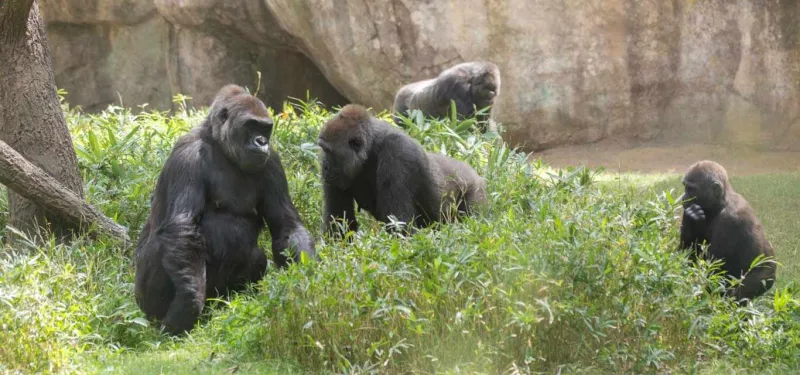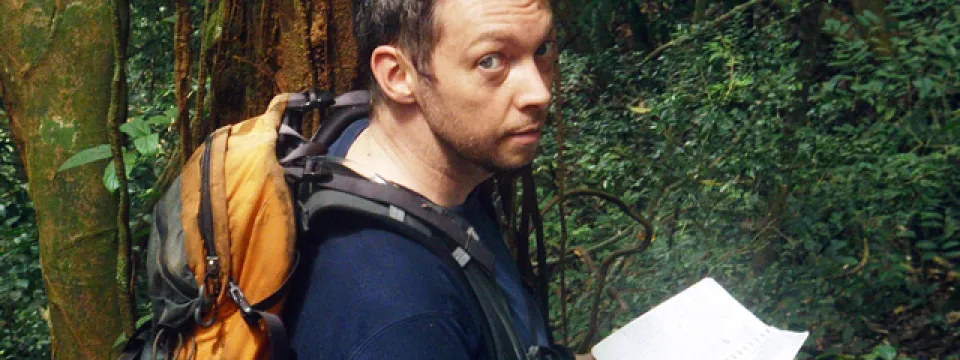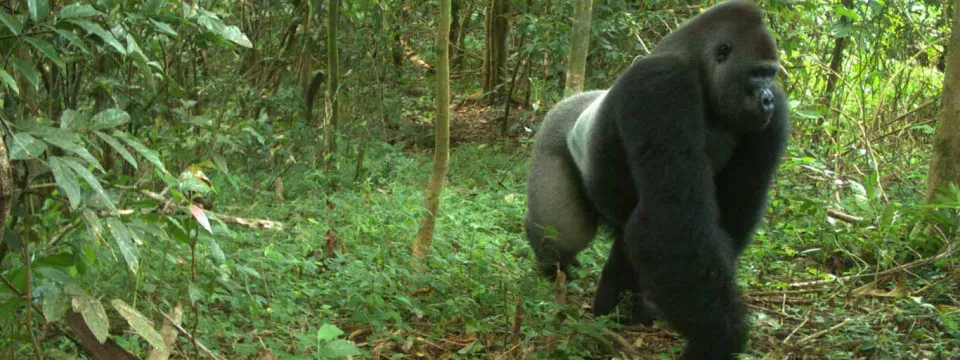Dr. Rich Bergl, Director of Conservation, Education and Science for the North Carolina Zoo
Gorillas are both one of the zoo’s most popular animals, and among the most endangered species of primates. What a lot of people don’t realize is that there are four different kinds of gorillas, or more technically, four different subspecies. Gorillas are only found in Africa but occur in several different countries across the continent. If you have been to any zoo in the U.S. and seen gorillas you have seen western lowland gorillas. These are the most common kind of gorilla, which occur in the wild in central Africa in countries like Gabon, Republic of Congo and the Central African Republic. We know a bit more about these gorillas because of the work we can do on them in zoos (check out the blog in Animal Care on A gorilla sized challenge for more information)

Western Lowland Gorillas at the North Carolina Zoo
If you have seen gorillas in a documentary, or have heard about the work of Dian Fossey, then you are talking about mountain gorillas. These gorillas live at high altitudes primarily in Rwanda and Uganda and have longer, thicker hair than other gorillas. A lot of what we know about gorillas comes from habituated troops of mountain gorillas. In the past, researchers spent months getting the gorillas used to people and this allows scientists (and now tourists and filmmakers) to get closer – hence many of the amazing photographs you might see of them. A third kind of gorilla, the eastern lowland gorilla, is found only in the Democratic Republic of Congo (DRC). These gorillas tend to have narrower, longer faces than other gorillas and have been negatively affected by political instability and conflict in the DRC.
Mountain gorillas in Rwanda
While all gorillas are Endangered and at risk of extinction, it is the fourth kind of gorilla, the Cross River gorilla, that is the most endangered ape in Africa. These gorillas are found only in a small area of mountainous forest along the border between Nigeria and Cameroon in West Africa. The habitat of these gorillas has been eroded by logging and farming and historically local people have hunted them for meat. As a result, only about 300 Cross River gorillas remain in the world. As a result of their low numbers and their wariness of people (because they have been heavily hunted), not much research has been done on this subspecies, and very few people from the outside world have even seen them.
I began my research on Cross River gorillas over twenty years ago. After working for several years as a zoo keeper looking after gorillas at Chicago’s Brookfield Zoo, I decided to pursue a PhD studying gorilla conservation. When I began my field work I knew that it would be almost impossible to do any kind of research that required observing the gorillas. The kind of behavioral research that Dian Fossey did, as seen in “Gorillas in the Mist” first requires that troops be habituated and so wouldn’t be feasible. But how to do research on an animal if you can’t even see it? The answer, it turns out, was poop! My research involved collecting samples of gorilla dung from the nest’s gorillas sleep in each night and extracting DNA from those samples. Using that DNA I designed a genetics study to better understand how they moved across the landscape, how related they all were to each other, and how genetically healthy the Cross River gorilla population was.
Above: The Cross River gorilla, the most endangered ape in Africa
My field work involved searching the forest for any sign that the gorillas had passed by recently. I worked with local hunters who know how to track animals in the forest based on only the faintest print in the earth or a small broken branch. Every day we would set out from our camp deep in the forest to look for gorillas. On most days we would spend the entire day from 6AM to 6PM without seeing anything. On a good day we would findgorilla trails and be able to follow them for some time until we lost it. On a great day we would be able to follow that trial to a place where gorillas had slept the night before and collect dung samples for the genetic analysis. However, most days we would not find anything and we could often go a week or more without collecting a single sample.
Despite the challenges this work was very rewarding. I got to see places that few people had ever seen. In fact, I am the only person in the world who has been to all the sites where the Cross River gorillas occur. While my goal was not to see the gorillas, I did get lucky enough on a small number of occasions to get a glimpse of them. In almost two years of field work for my PhD I saw them twice, for a total time of about 5 seconds! The best view I had was of a young male gorilla who was feeding on a tree. As my team and I came over a rise on a steep mountain ridge, all of a sudden there he was. We were only about 10 feet away from him and I think he was as surprised as we were. We stared at each other for a split second then he quickly disappeared into the thick undergrowth. It was a brief but memorable experience.
I did eventually manage to collect enough dung samples to do the genetic analysis that formed the majority of my PhD research. By looking at the DNA extracted from the gorilla poop, I was able to determine that gorillas did still move across the entire area where they occur today, and are not stuck in “islands” of forest, cut off from each other. I was also able to determine that the population was reasonably healthy genetically, and that if we are able to protect the gorillas so that their numbers can increase, they will be able to survive for many years to come.
Check back to learn more about how staff at the North Carolina Zoo are using science to help protect endangered species around the world and in our own backyard.



